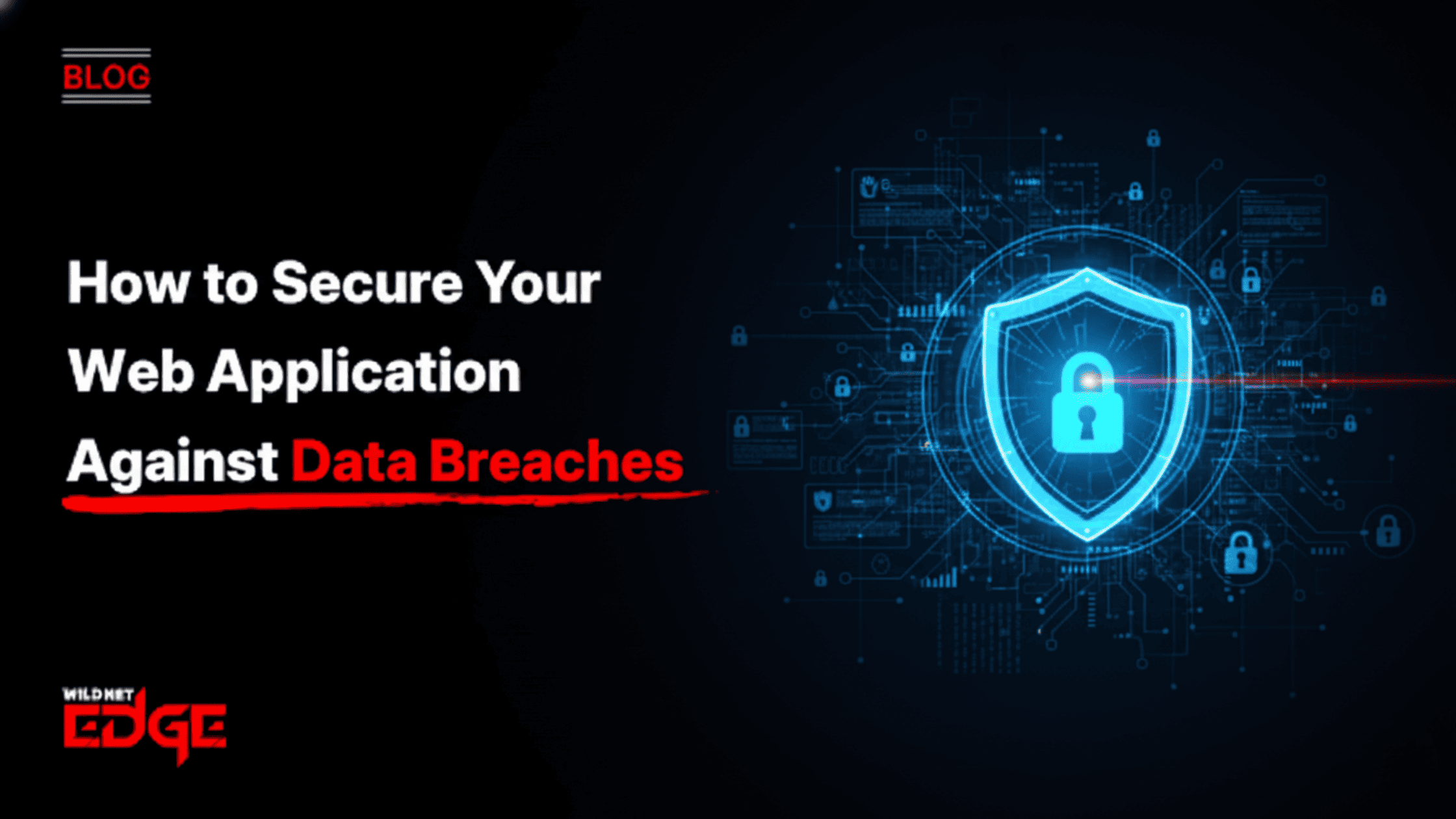TL;DR
This article highlights web application security as a critical business function. It covers essential practices like strong authentication, HTTPS encryption, input validation, and a secure software development lifecycle. For business leaders, a multi-layered approach is key to protecting customer data, managing risks, and building a resilient, trustworthy digital presence.
In today’s digital world, your web application isn’t just technology it’s the heartbeat of your business. From handling transactions to storing sensitive customer data, it touches every part of your operations. That also makes it a tempting target for cybercriminals. One security lapse can cost more than money, damaging trust, reputation, and relationships that took years to build. Thus, today, prioritising web application security isn’t just a technical necessity; it’s about protecting your customers, your team, and the future of your business. So, let’s dive into the details and understand how web application security can help you secure your business.
Why Web Application Security is a Board-Level Concern
The financial and reputational stakes have never been higher. According to a report by IBM, the global average cost of a data breach in 2023 was a staggering $4.45 million. This figure doesn’t even account for the long-term damage to a company’s brand.
For business leaders, this means that web application security is a core business risk that must be managed proactively. It’s not a one-time fix but a continuous process of identifying vulnerabilities and building multiple layers of defense to protect your most valuable digital assets. This requires a commitment to cybersecurity best practices across your entire organization.
The Foundational Pillars of a Secure Web Application
A strong security posture is built on several interconnected principles. These concepts, many of which are outlined in the industry-standard OWASP Top 10, are the non-negotiable foundations of a secure system.
1. Strong Authentication and Access Control
The most common attack vector is a compromised user account. You must ensure that only authorized users can access your system and that they can only access the data they are supposed to.
- Multi-Factor Authentication: This is the single most effective control for preventing unauthorized access. It requires users to provide two or more verification factors to log in.
- Principle of Least Privilege: Users should only be granted the minimum level of access they need to perform their job functions. An administrator in your marketing department, for example, should not have access to financial data.
2. Data Encryption: In Transit and at Rest
All sensitive data should be encrypted.
- In Transit: Use Transport Layer Security, indicated by HTTPS in your URL, to encrypt all data that travels between your user’s browser and your server. This prevents attackers from eavesdropping on the connection.
- At Rest: Sensitive data stored in your database, such as passwords or personal information, should also be encrypted. This ensures that even if an attacker gains access to your database, the data is unreadable.
3. Rigorous Input Validation
Never trust user input. Many of the most common attacks, such as SQL Injection and Cross-Site Scripting, occur when an attacker inputs malicious code into a form on your website. Your application must validate and sanitize all user-supplied data to ensure it is in the expected format before it is processed or stored. This is a cornerstone of secure web development.
The Role of a Secure Software Development Lifecycle
Web application security is not something you can bolt on at the end; it must be integrated into every phase of the development process. This is known as a Secure Software Development Lifecycle.
- Secure Design: Security considerations are part of the initial architectural planning.
- Secure Coding: Developers are trained in secure web development practices and use frameworks with built-in security features.
- Security Testing: Automated security scans and manual penetration testing are integrated directly into the development pipeline. This “shift-left” approach, where security is moved earlier in the process, is far more effective and cost-efficient than fixing vulnerabilities after deploying the product. This is a core philosophy of any expert Web Application Development Company.
Case Studies
Case Study 1: A FinTech Platform’s Security-First Architecture
- The Challenge: A FinTech startup was building a new investment platform to handle sensitive financial data. From day one, they needed to ensure bank-grade security and compliance to gain user trust and meet regulatory requirements.
- Our Solution: As their chosen Custom Web Application Development Company, we implemented a security-first development process. We built the application using a multi-layered security architecture, with end-to-end encryption, strict access controls, and continuous threat monitoring.
- The Result: The platform launched successfully and passed all its third-party security audits with flying colours. The robust security posture became a key selling point, helping them to secure partnerships with major financial institutions.
Case Study 2: An eCommerce Site’s PCI Compliance
- The Challenge: An online retailer was building a new eCommerce platform and needed to ensure it was fully compliant with the Payment Card Industry Data Security Standard (PCI DSS) to process credit card payments securely.
- Our Solution: We designed their checkout flow to use a tokenisation system with a trusted payment gateway. This ensured that no sensitive credit card data touched their servers, dramatically reducing their compliance scope and security risk.
- The Result: The retailer achieved PCI compliance quickly and affordably. This protected them from the significant financial and legal liabilities of handling credit card data and provided their customers with a secure and trustworthy checkout experience.
Our Technology Stack for Secure Development
We use a modern, secure stack to build resilient web applications.
- Frontend: React, Angular, Vue.js (with a focus on security headers and content security policies)
- Backend: Node.js, Python, .NET
- Databases: PostgreSQL, MySQL, SQL Server (with a focus on preventing SQL injection)
- Authentication: OAuth 2.0, OpenID Connect, MFA
- Security Tools: OWASP ZAP, SonarQube, Snyk
Conclusion
Web application security is a continuous journey, not a destination. It’s a fundamental business function that requires a proactive, multi-layered approach. By embracing cybersecurity best practices and integrating security into every stage of your development lifecycle, you can build a resilient digital presence that protects your customers and your bottom line.
Ready to build a web application that is as secure as it is powerful? Connect with Wildnet Edge. Our AI-first approach enhances our security practice, allowing us to build intelligent threat detection systems into our Software Development Solutions to keep you one step ahead of the attackers.
FAQs
One of the most overlooked risks is insecure third-party dependencies. Modern web applications are built using many open-source libraries. A single vulnerability in one of these libraries can create a hole in your application. Regular dependency scanning is a critical part of secure web development.
You can justify it by framing it as a risk management investment. An audit costs a tiny fraction of the potential cost of a data breach, including fines, legal fees, and reputational damage. An audit is a proactive measure to prevent a catastrophic event.
The cloud provider operates under a “shared responsibility model.” They are responsible for the security of the cloud (the physical data centres and infrastructure), and you are responsible for security in the cloud (securely configuring your application, network, and user access).
“Shifting left” means integrating security earlier in the development lifecycle. It is far cheaper and faster to fix a security vulnerability during the coding phase than to patch it in a live production environment after users or attackers have discovered it.
You should conduct automated security scans for every CI/CD pipeline build. In addition, you should perform a comprehensive, manual penetration test with a third-party expert at least once a year, or after any significant changes to your application.
An existing application can usually be significantly hardened. This typically involves a security audit to identify vulnerabilities and a prioritised remediation project. A complete rebuild is usually only necessary if the core architecture is fundamentally insecure.
A vulnerability scan is an automated process that scans your application for known security weaknesses. A penetration test is a manual process where an ethical hacker actively tries to break into your system to find and exploit unknown vulnerabilities, simulating a real-world attack. Both are essential cybersecurity best practices.

Nitin Agarwal is a veteran in custom software development. He is fascinated by how software can turn ideas into real-world solutions. With extensive experience designing scalable and efficient systems, he focuses on creating software that delivers tangible results. Nitin enjoys exploring emerging technologies, taking on challenging projects, and mentoring teams to bring ideas to life. He believes that good software is not just about code; it’s about understanding problems and creating value for users. For him, great software combines thoughtful design, clever engineering, and a clear understanding of the problems it’s meant to solve.
 sales@wildnetedge.com
sales@wildnetedge.com +1 (212) 901 8616
+1 (212) 901 8616 +1 (437) 225-7733
+1 (437) 225-7733































